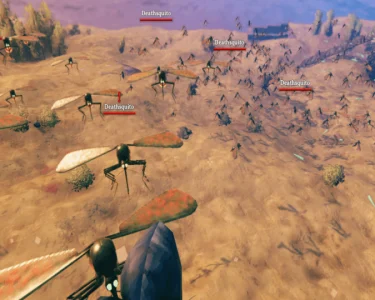Introduction:
When it comes to deadly creatures, our minds often conjure images of ferocious predators like sharks or venomous snakes. However, a surprising revelation awaits as we delve into the statistics of the animal kingdom. In this report, we uncover the truth about the animal that claims more human lives than any other. Prepare to be astonished as we explore the unexpected reality behind the world’s deadliest creature.
Unmasking the Unassuming Culprit:
While the fearsome reputation of sharks and snakes may dominate our nightmares, the animal responsible for the most human deaths may come as a shock: the humble mosquito (family Culicidae). These tiny insects, often dismissed as mere nuisances, carry diseases that have an enormous impact on global health, far surpassing the danger posed by more traditionally feared creatures.
Understanding the Mosquito’s Lethal Power:
Mosquitoes are vectors for a range of deadly diseases, including malaria, dengue fever, Zika virus, and yellow fever. These diseases take a heavy toll on human lives, especially in regions where mosquito populations thrive. To grasp the magnitude of the threat, it is essential to comprehend the behavior and impact of mosquitoes.
The Global Toll of Mosquito-Borne Diseases:
Every year, mosquito-borne diseases affect millions of people worldwide. Malaria alone is responsible for over 400,000 deaths annually, predominantly in sub-Saharan Africa. Dengue fever infects an estimated 100 million people each year, while the Zika virus and yellow fever continue to pose significant threats in various regions.
Combatting the Mosquito Menace:
1. Mosquito Control: Implementing effective mosquito control measures is vital to reducing the risk of mosquito-borne diseases. This includes initiatives such as insecticide spraying, larval control programs, and the development of genetically modified mosquitoes to suppress populations.
2. Disease Surveillance: Timely and accurate disease surveillance allows for early detection, rapid response, and targeted interventions. Investing in robust surveillance systems enables authorities to track disease outbreaks and implement appropriate control measures.
3. Public Education and Awareness: Raising awareness about mosquito-borne diseases is crucial. Communities should be educated about preventive measures, including the use of mosquito nets, insect repellents, and eliminating breeding sites.
4. Research and Innovation: Continued research into mosquito biology, behavior, and disease transmission is vital. This knowledge drives the development of innovative tools, such as new insecticides, vaccines, and mosquito control strategies.
5. International Cooperation: Mosquito-borne diseases do not recognize borders. International collaboration and sharing of expertise and resources are essential in combating these diseases effectively.
Conclusion:
While sharks and snakes may capture our attention with their menacing reputation, it is the unassuming mosquito that claims more human lives than any other creature on Earth. The diseases they carry, such as malaria, dengue fever, and Zika virus, have a profound impact on global health. To combat this deadly threat, it is imperative that we invest in mosquito control measures, enhance disease surveillance, educate communities, support research and innovation, and foster international cooperation. By addressing the mosquito menace head-on, we can save countless lives and protect communities from the devastating impact of mosquito-borne diseases. Let us not underestimate the power of these tiny yet lethal creatures and take collective action to ensure a safer and healthier world for all.




